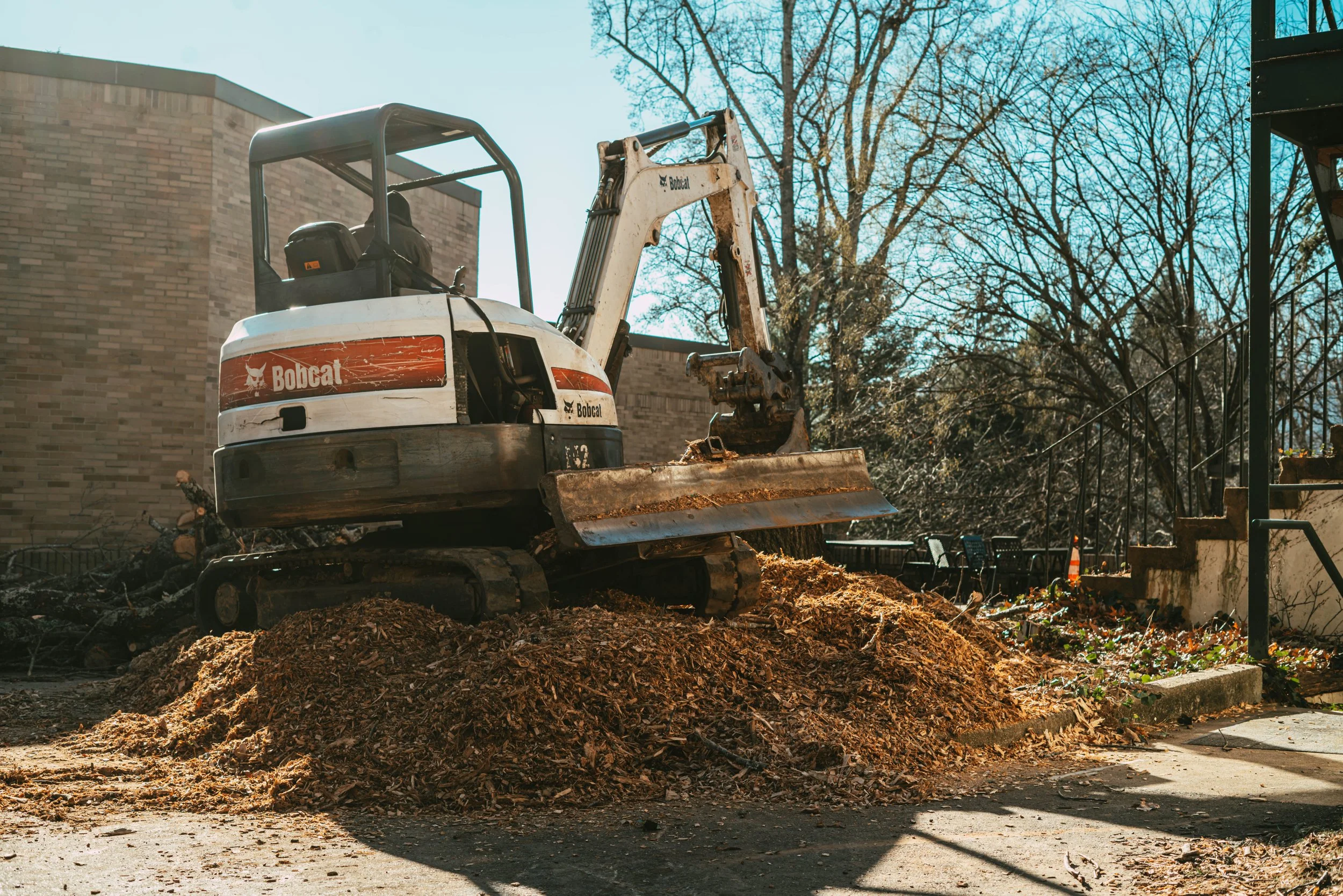The Nuance of Cutting Down Trees at WWC
Stella Rose Banowetz | December 9, 2021
Quinn Bonney
Remnants of the tree that stood next to Sunderland, and one of the machines that took them down.
On November 24, students in Shepard house at Warren Wilson College (WWC) woke to the sound of chainsaws. Five days later, students arrived back on campus to find that some of their favorite trees were taken down over Thanksgiving break. This beckons the question, why did they get taken down in the first place, and where is the transparency?
“I think people get really reactive to trees getting cut down, and they don't understand the whole picture and how it's okay for trees to be cut down,” said Ava Clifford, a transfer environmental studies (ENS) and forestry major and Forestry Crew member. “Yeah, under circumstances of them being diseased, of them possibly causing building damages or like human damage. Yeah, I just think there's a lot more to it than people really understand.”
There are a lot of oak trees on campus that are reaching the end of their life. Stress factors reduce this life span. According to Dave Ellum, professor of ecological forestry and dean of land resources at WWC, there are a lot of different factors that play into deciding whether a tree should be taken down.
One of those factors is disease. In the case of the tree located between Sunderland and Jensen Hall, the original instruction given by Ellum was to limb said tree due to it dropping branches in an area heavily used by students and faculty, but when facilities went in they discovered that the tree was rotten through and had to come down. The location of the tree and factors of student safety influenced that decision greatly.
Quinn Bonney
A person using the backhoe.
“When you think of these big trees on campus, I think of two axes on a graph,” said Ellum. “One of them is how likely is it to fall? And the second axis is how much activity happens around that tree. So if a tree is really likely to fall, but it's not going to be anywhere near where it's going to harm people, then you probably leave it be. But if a tree is getting ready to fall and it's over a playground — the exact same tree, you might leave alone over here, but over here — you might take down because of the danger of someone getting hurt.”
Ellum said that the reason for trees being cut down over Thanksgiving break when less students are on campus is a matter of safety. It's dangerous to bring in cranes and have trees dropping when a large population is present.
The information shared by Ellum was not widely-known nor communicated with the majority of the student body. This contributes to a gap between administrators and students.
“Yeah, it definitely seems that in recent years there's been a lot of decisions that the administration has been making and not being transparent with the students, and especially when the student body has been upset or questioning a decision — they're just not open to communicating,” said Daniel Baron, a fourth-year conservation biology major at WWC.
In the case of past decisions, it’s not possible to say the administration's intentions or reasoning behind not properly communicating with students. When it comes to the WWC trees though, it could be inferred that a lack of transparency was an honest mistake.
“I want students to know that we do not take taking down trees lightly. This campus is beautiful and part of the beauty of this campus are these large stately trees on campus. … So I just want folks to know: ‘Well, yes, maybe we can do a little bit better with communication.’ I don't want anyone to think that we're just taking down trees willy-nilly. No tree is gonna come down for no reason,” said Ellum. “It's always easier and better to be proactive in communication, rather than reactive, and sometimes we do fall into a reactive situation where a little more information upfront could have been helpful.”



